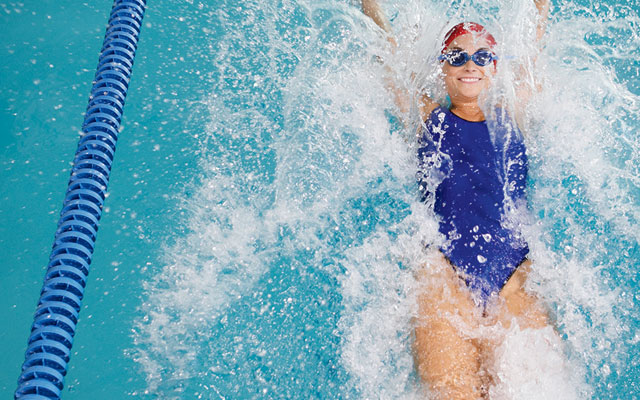The Perfect Exercise

Most people know that physical activity is an essential part of a healthy lifestyle. But for people who have a physical limitation, getting enough exercise can be even more challenging. Swimming is an excellent form of exercise for most of us—young and old, pregnant women, people with injuries or other limitations, and anyone who’s looking for a great overall workout. Swimming really is a “one-stop shop” when it comes to exercise. You get a great total body workout that combines flexibility, strength training, and aerobics all at the same time.
Unparalleled health benefits
Regular swimming can improve your health and fitness like few other single exercises can. Here’s how:
- Tones muscles – With the increased resistance of the water, swimming tones your arms, legs, torso, and almost every other muscle in your body. The best swim strokes for total body toning are freestyle, breaststroke, and backstroke.
- Reduces risk of injury – The buoyancy of the water provides a safe, low-impact workout that can effectively increase strength and flexibility, without putting undue stress on joints.
- Improves cardiovascular health – Swimming stimulates circulation and is medically proven to lower high blood pressure and cholesterol and decrease the risk of heart attack, stroke, and diabetes.
- Relieves stress – Swimming increases the flow of blood and oxygen throughout your body, which helps regulate breathing, increase lung capacity, and reduce stress.
Getting started
Making swimming part of your fitness routine is a smart choice. If you have health issues, however, be sure to check with your doctor or healthcare provider before you begin. Once you get the green light, you’ll need:
- A comfortable, durable swimsuit
- Goggles
- A commitment to swim on a regular basis
- Kickboard and fins (helpful, but optional)
In swimming, there are a variety of different strokes, including freestyle (front crawl), breaststroke, backstroke, sidestroke, and butterfly. Like any exercise, you get the most benefit from each stroke by doing it correctly. If you’re not sure about your technique, take a refresher class or ask a skilled swimmer to watch your form and give you feedback.
Here are some additional tips to help you start a safe, effective swimming routine:
- Start slowly and build. As you become more comfortable in the water, gradually push yourself faster and longer.
- Alternate between high-intensity strokes (freestyle) and lower intensity ones (sidestroke or simple laps with a kickboard).
- Make it a point to extend and stretch your body with each stroke.
- Focus on your breathing to build endurance and feel more relaxed.
- Go at your own pace.
3 rules of the pool
Knowing swimming etiquette will make for a safer, more enjoyable pool experience.
- Swim in the lane that’s appropriate for your level. Most pools designate lanes “fast,” “intermediate,” and “slow.” Take a moment to watch other swimmers to determine which lane is best.
- If there are more than two swimmers in a lane, swim in circles to avoid bumping into other swimmers. This means you go up one side of the lane and return on the other side.
- If you’re unsure about anything, ask the lifeguard for assistance.